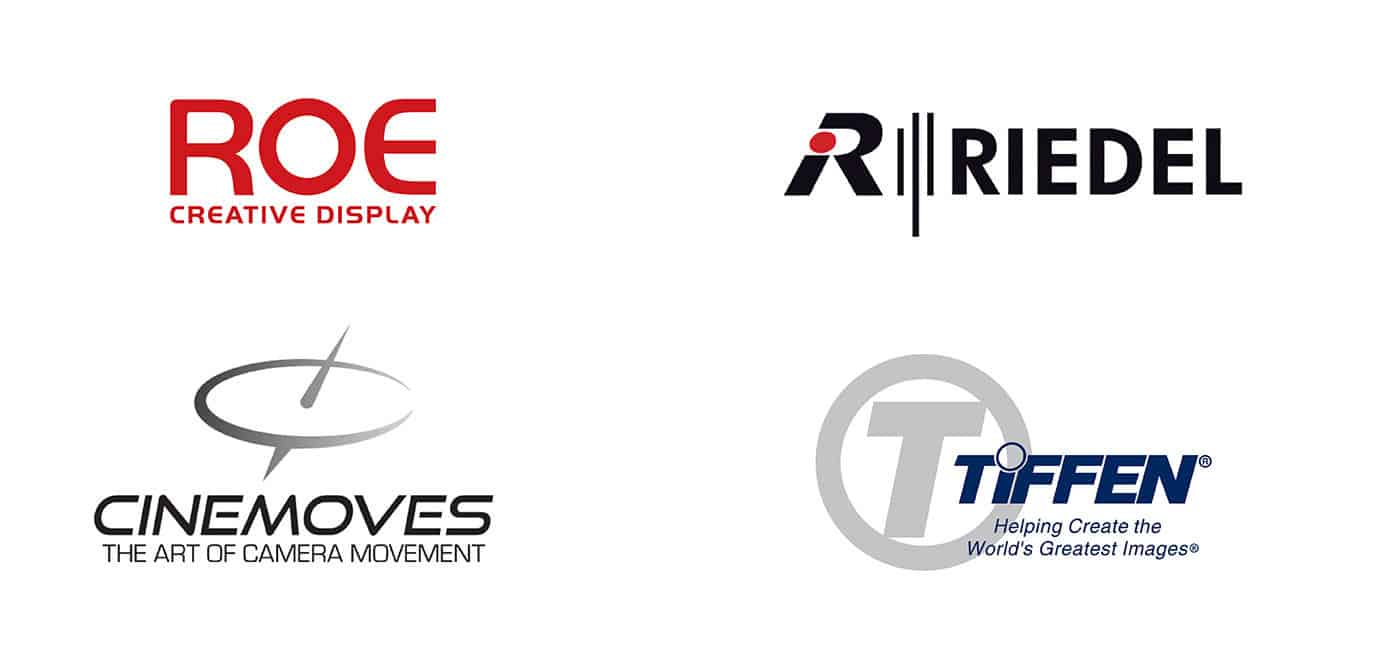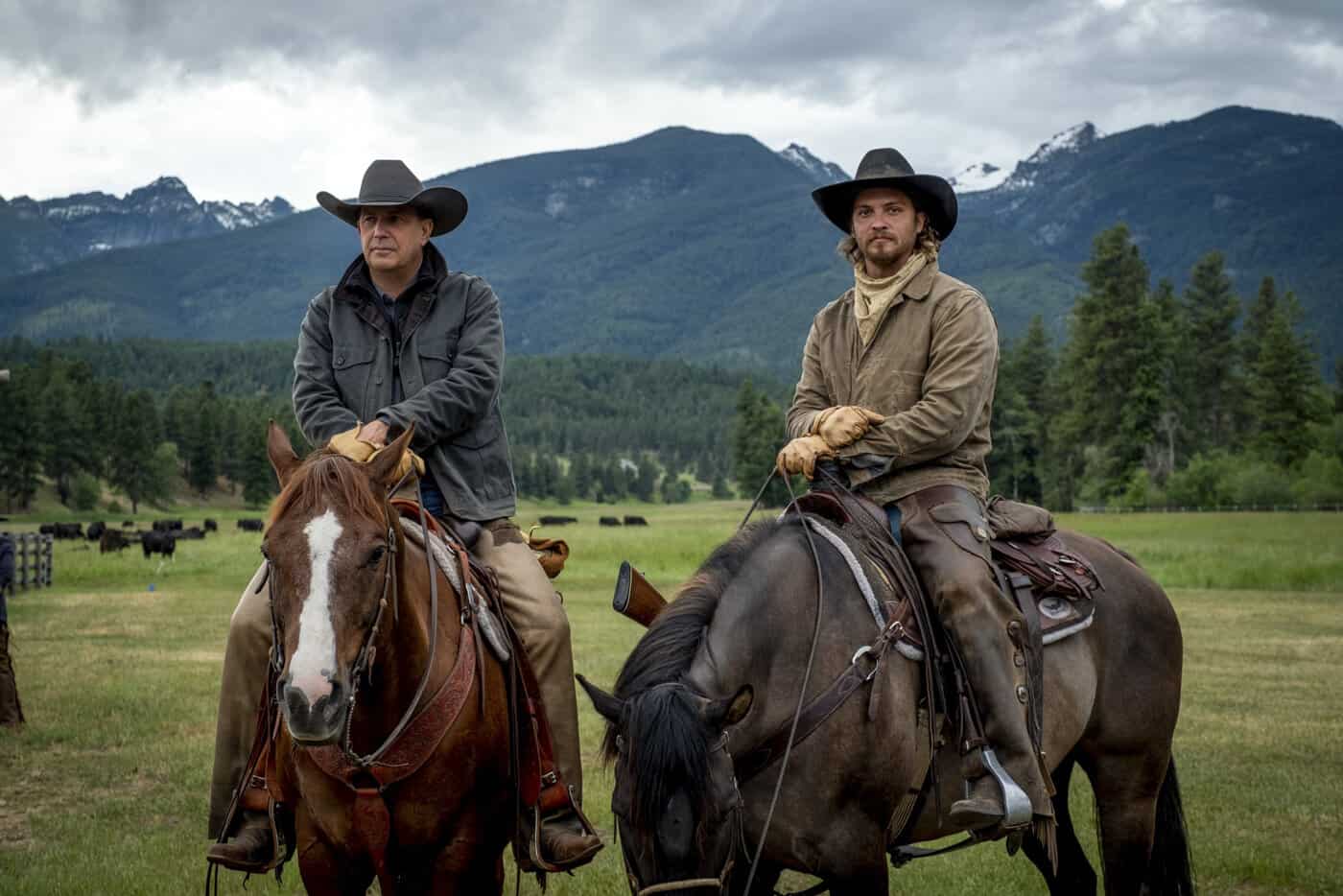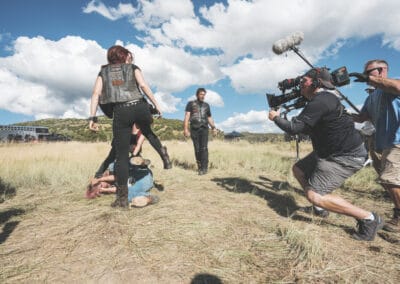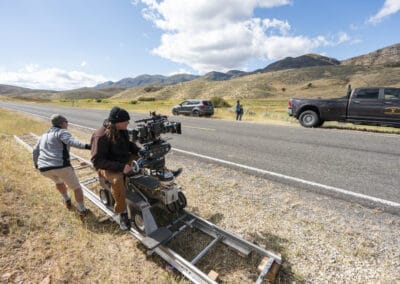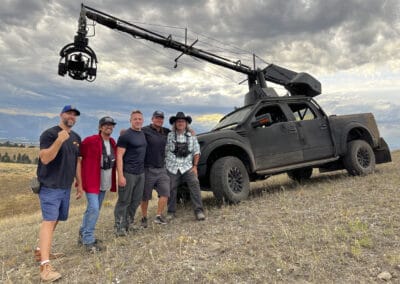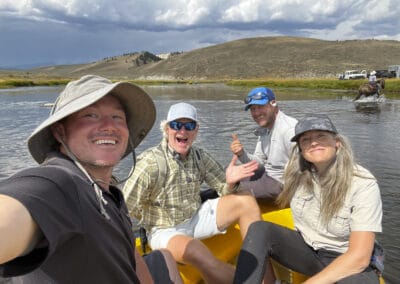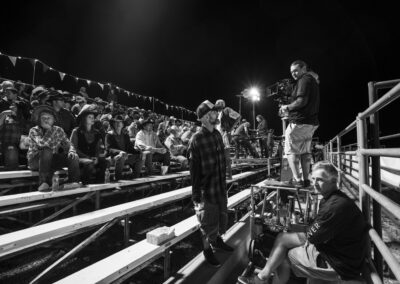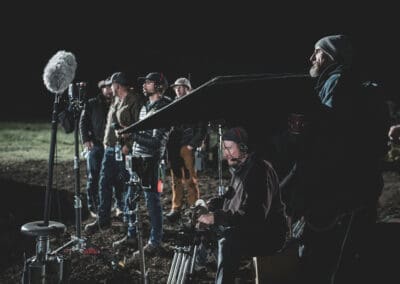Yellowstone
Family on the Frontier
A Conversation with Scott Dropkin, SOC
By David Daut
Equal parts Western and crime saga, Taylor Sheridan’s Yellowstone tells the story of the Dutton family and the sprawling ranch they have owned for more than a century. With pressures mounting from land developers, inter-family conflicts, and the inexorable march of time itself, patriarch John Dutton fights to maintain control over his family and his land by any means necessary. The series, now entering its fifth season, stars Kevin Costner, Luke Grimes, Kelly Reilly, Wes Bentley, Cole Hauser, Kelsey Ashbille, Brecken Merrill, Jefferson White, and Gil Birmingham.
Camera Operator had the opportunity to sit down with series A camera operator Scott Dropkin, SOC, to talk about his role on the show. From working alongside horses, cattle, and buffalo to shooting in some of the most beautiful locations on the planet, working on Yellowstone is rife with challenges and rewards, but through it all Dropkin emphasizes the value of seeing a film crew as its own sort of unconventional family. It was this feeling of familial bonds that carried the crew through the challenges of relocating from Utah to Montana as well as weathering the storm of the COVID-19 pandemic.
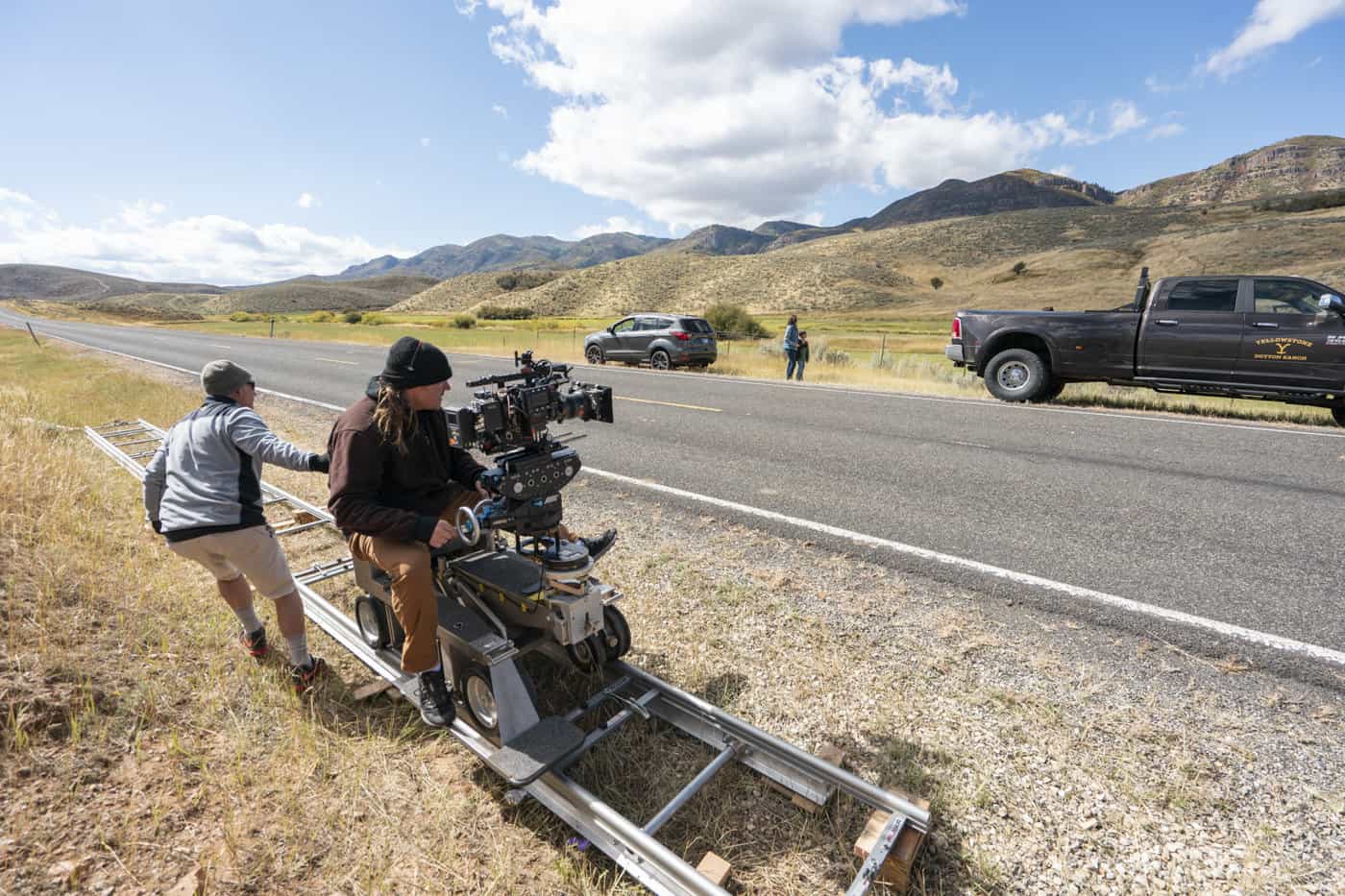
Camera Operator: If I’m not mistaken, you started working on Yellowstone with the Season 2 finale episode. How did you first become involved with the series?
Scott Dropkin: The Season 2 finale was actually the first thing they did when they started the Season 3 shoot; it was part of that block. That season, because of scheduling, they brought in two new DPs: Jim Denault and Bill Wages. I’d worked with Bill Wages before, so he recommended me and got me in, and I’ve been here ever since.
CO: What was it like coming onto the show midstream? Were you familiar with the show before you had started on it? How much did it take to bring yourself up to speed?
Dropkin: I knew of the show, but I hadn’t seen it yet. At the time we started shooting that season, they had only just started airing Season 2, so I basically went back and watched Season 1. The scheduling has always been kind of weird with when they shoot it versus when they air it, and a lot of that comes down to weather and things like that. But I did watch Season 1 to get familiar with the characters and stuff like that.
CO: I know on the first few seasons of the show filming was split between locations in Montana and near Park City, Utah. But starting with Season 4, I understand filming moved entirely to Montana. Can you talk a little bit about what that transition was like?
Dropkin: Yeah, it made sense technically. If the show’s in Montana, everything should be in Montana. I believe part of the reason that switch happened was we were one of the first shows coming back from COVID. For Season 4—which is when it changed—we started shooting at the tail end of July 2020, took a little bit off, and then started back in mid-August of 2020. So, I think they didn’t want to travel as much because there was less concern for COVID if we all stayed in one area. Also, I think the incentives helped with that. I think all those things played into it. But the great part with Taylor and the production was they brought everybody from Utah; all the grips, electricians, and some of the camera people were all locals in Salt Lake. Taylor, wanting to keep the family together, said, “We’ll just bring everybody up here.”
CO: That’s great.
Dropkin: So, it didn’t really change in terms of crew. Everybody still had their jobs, everybody was still coming back. And, honestly, I think it made things a lot easier just knowing that everything was here. There were definitely a few scouts in Park City where we had to ask, “Does this exterior look like Montana?,” but now, wherever we go, this is Montana.
CO: You mentioned how part of that move was in reaction to the world changing in the aftermath of COVID. Can you talk a little bit about your experience when that initial news that the world was shutting down came through?
Dropkin: At the time, I was doing two shows. I was doing Animal Kingdom and Yellowstone, and it was great because they kind of piggybacked each other. Animal Kingdom was January through June, and then Yellowstone was a summer show. But the shutdown happened in March and that pushed everything out, so once everything started coming back up, I had to choose a show. I’m sure that happened to a lot of people. Obviously I stayed with Yellowstone, mainly because—like I said earlier—it was one of the first ones back. I think most shows started gearing up around September or October of 2020, but because we were in Montana—even at the time I don’t think the entire state had 2,000 cases of COVID—and because it’s an outdoor show, I think it was a lot easier to start to gear back up for Yellowstone. And so it was like, okay, this is the first one back, this is kind of where I need to go.

CO: On a show about cattle ranchers, inevitably you’ll be doing a lot of work around animals. As a camera operator, what’s involved in shooting scenes with actors on horseback, large herds of cattle, wolves, deer, even a couple of bears here and there?
Dropkin: Like everything, you treat it with respect and you get to know the wranglers really well. I think one of things that surprised me the most was how well behaved and how well trained the animals were, even ones that you wouldn’t expect. In Season 3 we had buffalo, this season coming up there’s buffalo, and it’s surprising how well they actually do behave. There’s a lot of times we’ll lay a few more feet of dolly track than the shot would probably need, only because they’re not gonna hit the mark, we need to be able to adjust, we need to be able to stay on the certain side of the of the shoulders and overs. And so we need to be able to have over keepers and sometimes it’s 20 feet of dolly track in order to be able to adjust when the horse may not hit a mark.
CO: The structure of the show tends to be a little bit of a slow burn that builds tension up to these quick moments of shocking violence, but with the first episode of Season 4, we get a lot more sustained action than we typically see in this show with the coordinated attack on the Dutton family. What was it like shooting those bigger action sequences for the Season 4 opener?
Dropkin: It was really cool, because it is something that doesn’t always happen on the show, and we shot it in a way that’s a little different than the show usually is. A lot of the camerawork normally for the show is a lot of long lenses with very minimal camera movement, but obviously once the shooting came, it was more Steadicam, handheld, the armed cars for the chases, and things like that. So, it was exciting to have a little bit of a departure from the normal shooting of the show, especially right out of the gate. That was very early on in that season, because Season 4 picks up exactly where Season 3 left off, so it’s almost a continuation as opposed to starting a new storyline, starting new characters, and then it builds towards the end. So, it was interesting to do it right out of the gate.
CO: The central location for the series is the titular Yellowstone Dutton Ranch, which is played on screen by the actual Chief Joseph Ranch in Darby, Montana. What was it like shooting at that location and sort of modulating it for different points of the story where it has to be sometimes this awe-inspiringly beautiful symbol of freedom and at other times a sort of oppressive, inescapable personal hell for the characters of the show?
Dropkin: That’s a hard one, because I don’t think I’ve got a really clear answer. I do know that for the Duttons—and the story that Taylor created—they always say “the ranch comes first.” And in a way we don’t think about it like that. When there is a difference between those emotions, the ranch is always just there. Whether it’s a scary part, like the attacks, or if it’s romantic, like Beth’s wedding, the ranch is always there. It’s not changing. The people around it might be, but this land is not changing. I think that’s kind of the best way to describe it, because I don’t think we’ve ever thought about shooting things differently when it is something that’s really dangerous for the Duttons compared to something that’s really romantic, or even when it’s just doing the ranching stuff. This ranch is always there. It’s not changing.
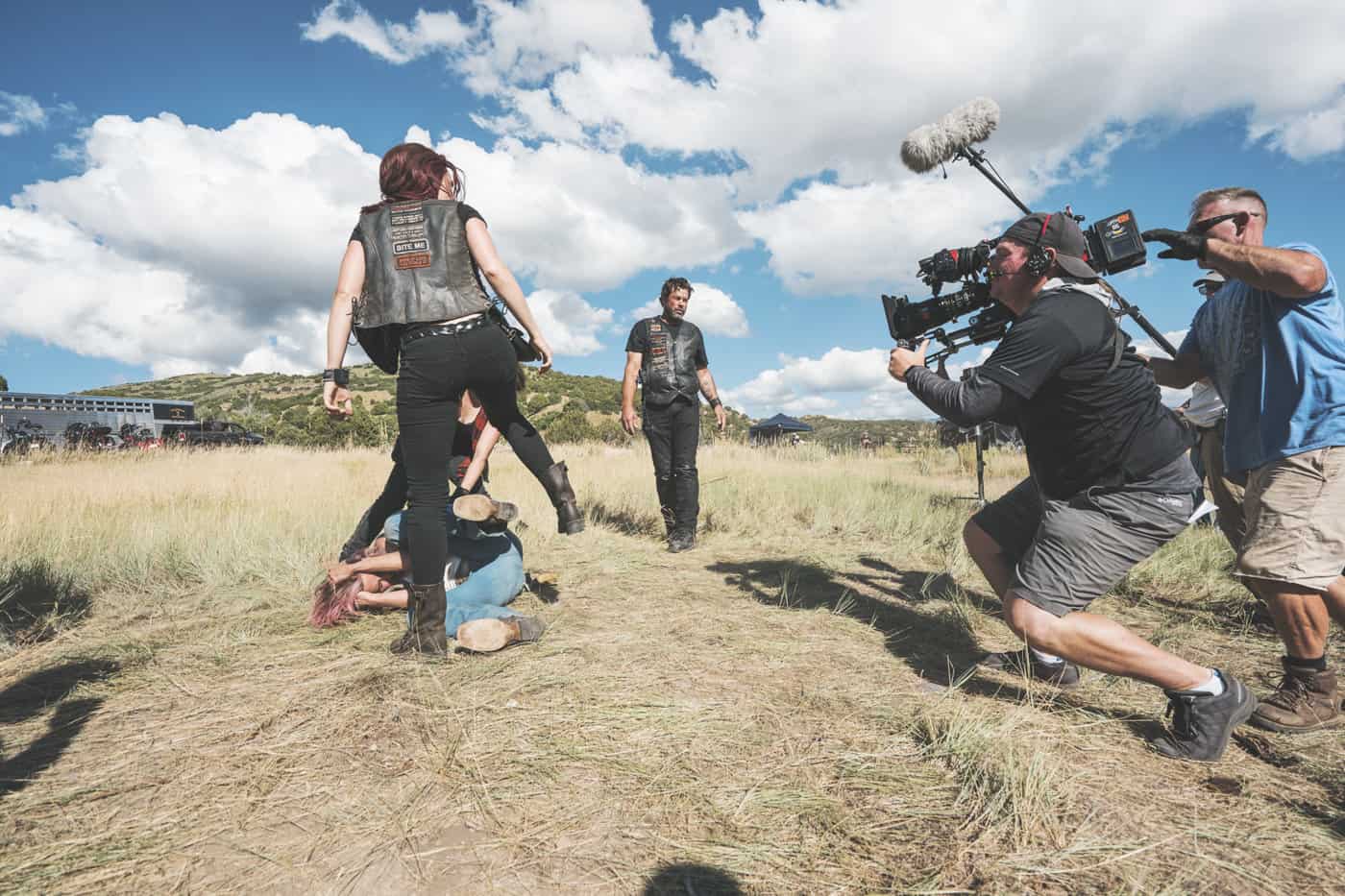
CO: Thinking back to your time on the show, is there anything that stands out as a particularly challenging or particularly rewarding experience?
Dropkin: I think the most challenging and rewarding are kind of the same answer, and it’s the locations. You see it on screen—everywhere we go is just gorgeous. The mountain ranges, the peaks and the valleys we go to—even when we shoot on stages, the drive getting to those stages is just such a beautiful landscape. We always joke around that in many ways it shoots itself. They pick a spot and it’s fantastic to see. But also that brings its challenges, because crew is bringing the dollies and the cameras—this season and last season we’ve got four camera crews full of great people. Our video village has always been four cameras that are rigged onto the back of an ATV, so everything gets driven around up these hills, and then they just pop the tents right over that with the monitors still built on. So, it’s challenging because of locations, but when you see it, it’s beautiful.
CO: You touched on this a little bit, but could you dig a little more into the type of equipment you use on this show?
Dropkin: All four cameras are ALEXA Mini LFs, and most of the time we’re all on zooms. The wide zooms are 28 to 100s, but a lot of the times we’re doing masters on 50mm lenses because the long lens is the look of the show. Then the other cameras that we have, we call them “BAZs”—B-A-Z for “Big-Ass Zooms”—and the C and D cameras most of the time are shooting equivalent to 800 or 1000mm lenses for their shots and their scenes because of the locations. The longer the lens and the further away, the better.
CO: You also mentioned that you wanted to highlight some of the rest of the camera team. Is there anyone in particular you’d like to highlight or anyone’s work you’d like to shout out here?
Dropkin: It starts with our DP and director, Christina Voros—she’s been on this since the beginning. She’s been an amazing leader, we all love working with her and every second with her is fantastic. Our other operators—who have all done it from previous seasons as well—on B camera there’s Abby Linne, SOC, and C camera right now is Britt West, and D camera is Jed Seus. Abby came on last season, and Jed has been on it since it was in Utah. That’s one of the great things with this show—it’s a good family. Everyone has always tried to dedicate themselves to the show and make themselves available, and that starts with Taylor Sheridan. He’s always made it so that when you’re in the family, you’re in the family, and you just keep going from there.
I definitely do want to reiterate that we have four cameras and we’re shooting all the time. It’s not a traditional one camera, A camera show. Especially when we’re doing exteriors, we’ll be shooting four different close-ups at the same time, four wides at the same time. It isn’t like, “well A is doing this, and that’s the important thing, and then B, whatever you can find, just kind of dig.” It’s really structured to where every camera is doing the “important” shots. And especially when everyone’s on horses and you’ve got Kevin [Costner] and Cole Hauser and Beth [Kelly Reilly] and all these people, each camera is going to follow a different character. In a way it’s like a controlled documentary. Some of the assignments where I’ll follow Kevin and then Abby gets Beth, or whoever, then sometimes we’ll place cameras and everything gets flipped around in terms of where the horses end up. Our assignments change, and we have to be on the fly to get it. And everybody’s on the same page—again, that’s the good family orientation of the show. We’re all here to help each other. There isn’t anybody that’s like, “this is my shot, and no one else does it.” That’s not this show, and that personality wouldn’t work with anybody from directors on down. It’s a big show in terms of how many cameras are shooting it, and sometimes we’ll cross each other and we have to slide over just to fight from not seeing each other, but we all make it work. It’s such a great crew of people, and that’s really what it takes to make this show.
CO: That’s a really interesting way of thinking about it as sort of a scripted documentary, where you have these scripted moments and these things you need to hit, but at the same time, you’re working with real animals in the real world. And even if they’re trained, there’s going to be things that you can’t predict down to the micro level, so you do have to have that room for little bit of improvisation and to capture things as they happen, always fitting the story, but finding those extra little moments as well.
Dropkin: Exactly. That’s what we all do. And that’s coming from Christina on down, telling us to look out for and not to be afraid to just stick on something. It’s like controlled documentation.

CO: Are there any specific examples that you can think of where something happened that you didn’t expect, or you caught something that was not necessarily scripted that enhanced a scene or made it into the show?
Dropkin: None off the top of my head. Usually it may be something as simple as an actor who’s supposed to ride up on a horse, stop, and say the line, but they just kept going—they kept riding—and saying, “Oh, that actually works out really well, because they’ll ride off into these mountains, and we’ll get all that background as they go.” A few things like that do stick out.
CO: By the time this magazine comes out, I think it’ll be two or three days away from the Season 5 premiere. Without revealing anything you’re not supposed to, is there anything you can talk about from your experience on this upcoming season that maybe viewers should keep an eye out for?
Dropkin: What can I say? I do know that this season is a bigger season. I don’t know the exact number, but I think there’s going to be around 14 episodes as opposed to the original 10. I can say it’s going to be big. There’s going to be more growth and more development with the Duttons, and I think the fans are going to be happy.
CO: Well, I’ve got to say it—I got this assignment for the magazine and I hadn’t watched the show up until that point. After doing a little bit of research and watching the show, it was interesting to realize how big the show is in terms of viewership and the number of people watching it. I hadn’t heard a lot about it, but apparently everybody else was already watching it. It’s definitely something that caught me by surprise, and I imagine it’s a very cool thing to be a part of.
Dropkin: Yeah, I’ve been doing this for almost 20 years, but so far this is the one show where if I wear a crew hat with the “Y” on it and just go to the store, there’s a lot random people that say, “Oh man, you know Yellowstone? Where did you get that hat?” Other times, other productions, it doesn’t happen, but it seems this is definitely that show. Like you said, it’s bigger than I thought it would be.
Camera Operator Fall 2022
Above Photo: Kevin Costner as John Dutton and Luke Grimes as Kayce Dutton in YELLOWSTONE. Photo by Danno Nell
TECH ON SET
ALEXA Mini LFs
Apple ProRes 4444
3.8K UHD
2:1 Aspect Ratio
Zeiss Supreme Primes
Fujinon Premista Zoom Lenses
RELATED CONTENT
Watch the trailer for YELLOWSTONE Season 4
Scott Dropkin, SOC
Learn more about Scott’s career and projects at IMDB.com
Insight: Spring 2020 Camera Operator
BEHIND THE SCENES
Select Photo for Slideshow
Scott Dropkin, SOC
Scott Dropkin, SOC, has worked as an A camera/Steadicam operator for over a decade. He was born and raised just outside of Los Angeles. He studied film and television arts at Cal State Northridge. His credits include Yellowstone, Animal Kingdom, The Chi, Chicago P.D., and American Rust.
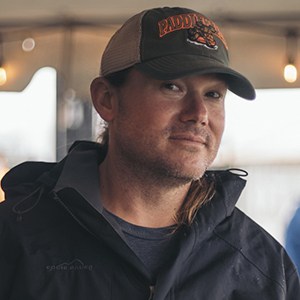
David Daut
A writer and critic for more than a decade, David Daut specializes in analysis of genre cinema and immersive media. In addition to his work for Camera Operator and other publications, David is also the co-creator of Hollow Medium, a “recovered audio” ghost story podcast. David studied at the USC School of Cinematic Arts and works as a freelance writer based out of Orange County, California.
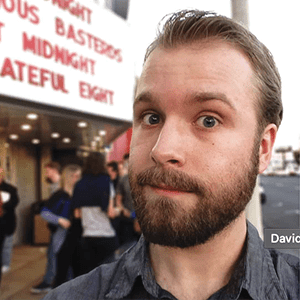
SPECIAL THANKS TO OUR ADVERTISERS
